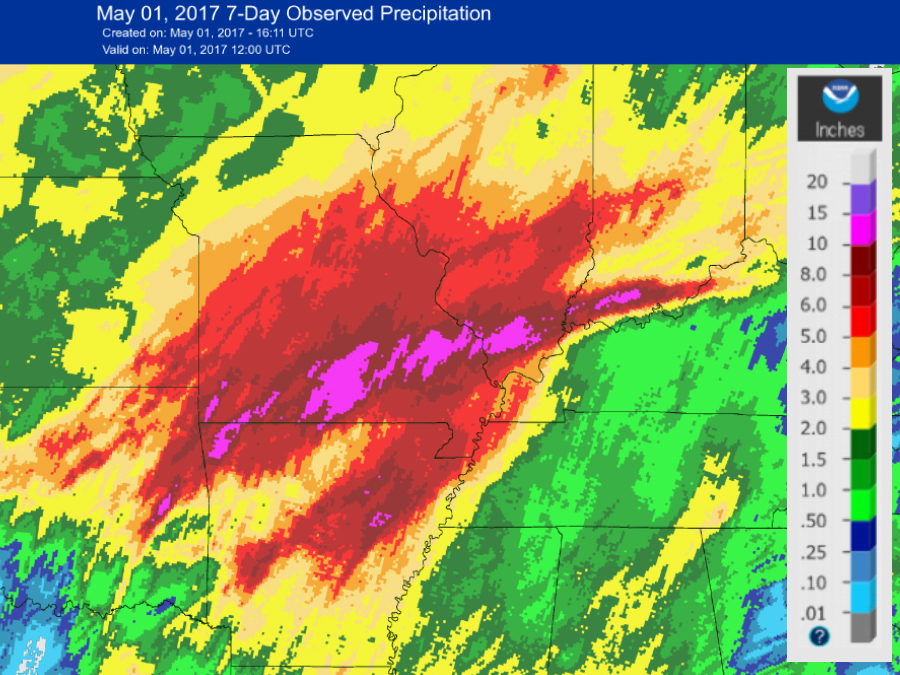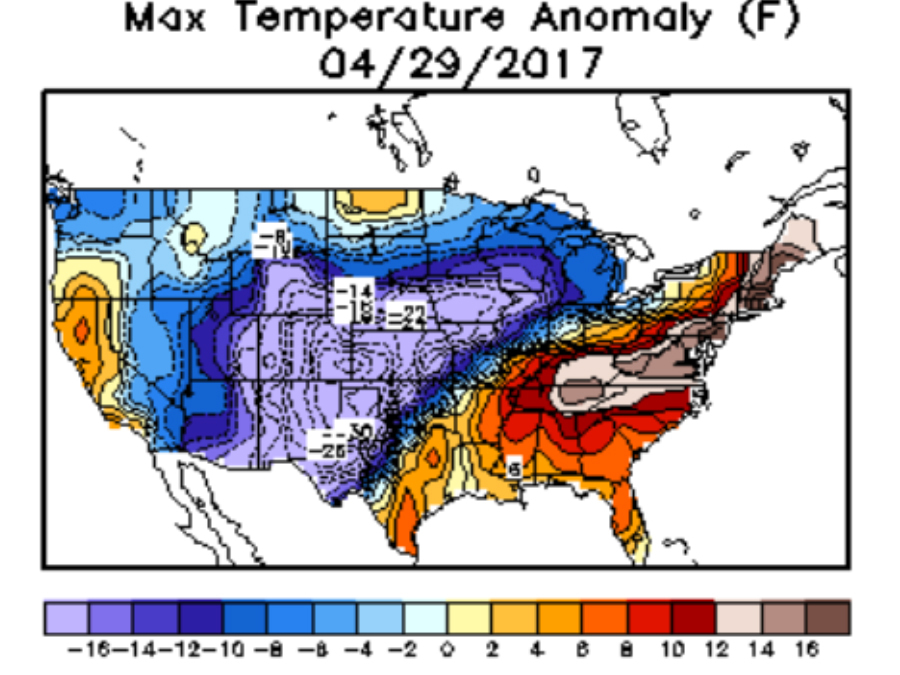April lived up to its dangerous weather reputation with a little bit of everything this past weekend, even resulting in 15 deaths.
RELATED: Storm Shield app provides life-saving weather alerts
RELATED: SnowCast tells how much snow will fall at your location
Deadly tornadoes and flooding in the middle of the country were responsible for all 15 deaths, and those storms grabbed the most weather headlines
Roughly two dozen tornadoes touched down between Texas and Mississippi and all the way up to Illinois.
It wasn't just tornadoes, either. The same thunderstorms brought copious amounts of rainfall to parts of Oklahoma, Arkansas, Missouri and Illinois. Some spots saw upwards of a foot of rain, which led to flash flooding. And later this week, all that rain water will cause some major rivers in the middle of the United States to flood, possibly cresting at record-breaking levels.

Now that same severe weather is heading east across parts of the Northeast and the Mid-Atlantic.
Many of those places watching out for severe weather today were dealing with extreme heat on Saturday and Sunday.
Temperatures were upwards of 10 and 20 degrees hotter than usual from middle Tennessee over to southeast Pennsylvania and everywhere in between.
The heat resulted in a number of heat-related illnesses at the St. Jude Rock 'n' Roll Marathon in Nashville, eventually forcing race organizers to end the race early before some runners had finished.
In Washington, D.C. on Saturday, people participating in the People's Climate March experienced record hot temperatures (insert your own ironic quip here).

It was quite the opposite in the Rocky Mountains and parts of the Plains where snow fell over the weekend.
The snow piled up in the last days of April across parts of Wyoming, Colorado, Nebraska and Kansas — all less than two months from the first official day of summer.
All this wide ranging weather is a part of the spring season, and the path the jet stream typically takes this time of year.
In the spring, the jet stream takes a crooked path, meandering north and south, which causes a couple of different weather phenomena.
First, it can cause big swings in temperature. When the jet stream dives farther south, it allows colder, polar air to invade otherwise warmer regions — this is what happened in the Rockies. And for every action, there's a reaction, and the jet stream flew north in the eastern half of the country where heat was able to build until it reached record levels in multiple cities.
The second thing that happens when the jet stream makes these wild swings is it creates big levels of instability in the atmosphere, and that was one of the big drivers in the multiple tornadoes that spun up both Saturday and Sunday.
The heavy rainfall is only because these thunderstorms didn't move very far over the course of a couple of days, so the same places were getting non-stop or near non-stop heavy rain from thunderstorms.
Now that it's May, don't expect this wild weather to abruptly end, but chances are it will begin to slow down as we approach the more stable season of summer.
Follow Storm Shield Meteorologist Jason Meyers via the Storm Shield app on Twitter, Facebook, and YouTube. Download the Storm Shield Weather Radio App for your iPhone or Android device and get severe weather alerts wherever you are. Named by Time.com one of the best weather apps for your iPhone.



